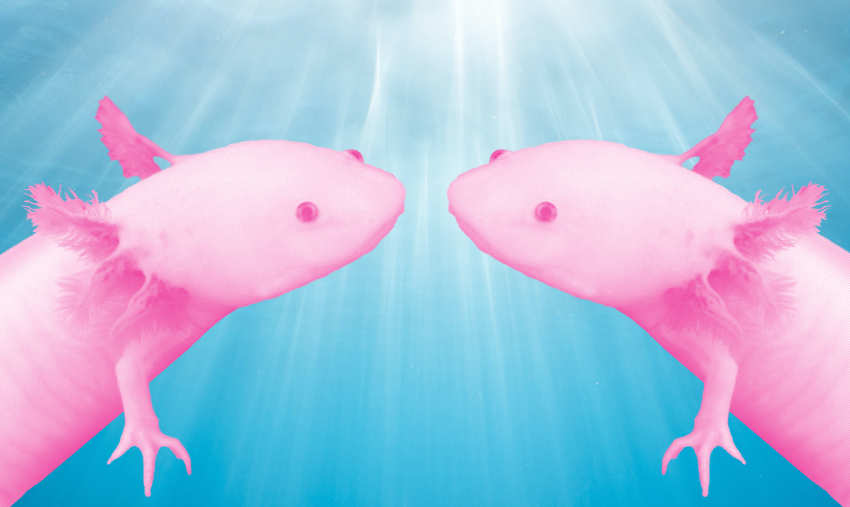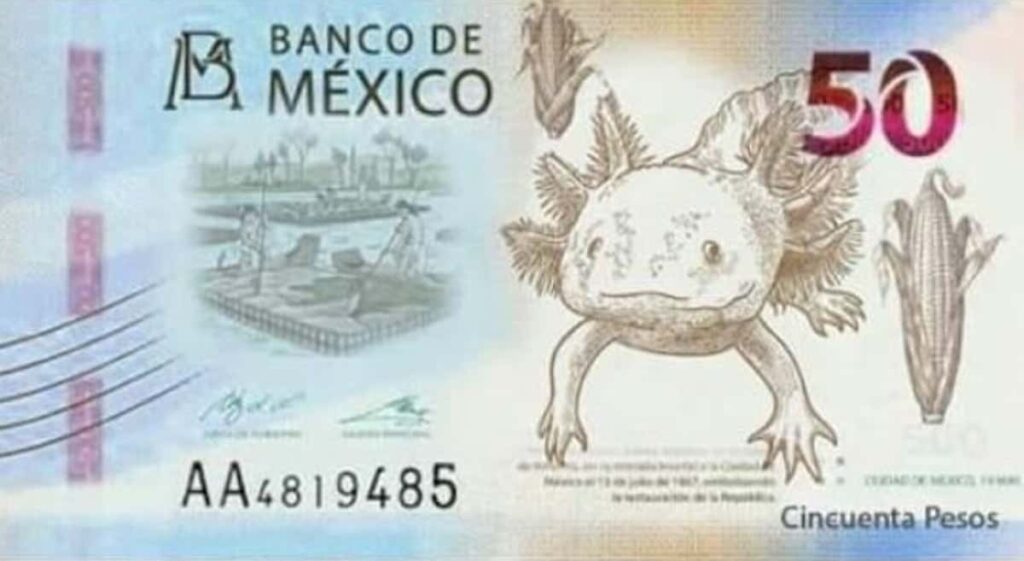Generation Ax
Conservation campaign highlights internet’s favorite salamander

The adorably-named Adoptaxolotl campaign has just launched in Mexico. Its purpose is not adorable, but alarmingly important—to boost conservation efforts to save the axolotl, a critically endangered aquatic salamander. (the next “level” on the endangered scale is “extinct in the wild”)
This may be surprising, since pop culture has long been in varying degrees of axolotlmania. Particularly since Minecraft added them in 2021 (in five colors!), axolotls have been popular pets; in the past 30 days on TikTok, #axolotl has averaged about a million views per day. Decades before that, the Pokémon Wooper was based on the critter, and it may have inspired Toothless, the title character in How to Train Your Dragon.
Why tho?
There is no denying it—axolotls are fascinating creatures. Let’s review.
Meaning “water monster” in Nahuatl, the axolotl was symbolically important to the Aztecs. They considered it a wee living embodiment of Xólotl, the god of death and lightning. Still today, it’s an important part of Mexico’s fauna and culture: Diego “Mr. Frida” Rivera featured axolotls in his paintings, and in his tiled Mexico City fountain, the Fuente de Tláloc. Since 2022, the endemic amphibian also features on a 50-peso note.

These aquatic amphibians aren’t textbook “monsters,” but rather whimsical, alien-esque aquatic amphibians with a perma-smile and frilly headdress of gills that runs from their necks to their tails. The whole package comes in at an average of 9 inches, and half a pound.
Axolotls are “neotenic”—they keep their larval, juvenile features throughout their lives, so they remain aquatic creatures (unlike other salamanders eventually develop lungs and live on land) This also means they don’t grow teeth, so they develop a bizarre suction-like technique to eat their food. In the wild, axolotls take on a black or brown coloring with specks of gold or olive green, that helps them better camouflage into their surroundings. But thanks to the vagaries of breeding, captive axolotls can be found in many different color “morphs” including albino, leucistic, copper, and lavender.
That’s just science
It isn’t just hobbyists hoping to find or breed a “rare” axolotl, scientists are intrigued as well. Not by their coloring or their joker-like smile, but by their freakish ability to regenerate body parts. They’re the undisputed world champions of that, regenerating ovarian, lung, spinal cord and brain tissue, all of which grows back at exactly the right orientation and size, with an invisible seam between the old and new.
Naturally, this has left researchers fascinated and wondering about the potential for human tissue regeneration. But to get there, scientists will have to isolate the genes in axolotl stem cells – and the axolotl genome is 10 times larger than humans’.
… But they can’t regenerate their whole species
The 18 species of wild axolotl are only found only in one place—Lake Xochimilco, near Mexico City. But that population is down 99.5% over the past two decades; a recent study suggests there are fewer than 1,000 remaining. The reasons for the declining population aren’t too surprising: Rapidly expanding urbanization, water pollution, the skin-eating chytrid fungus, and invasive fish species like carp and tilapia, introduced by the Mexican government in the 1970s as part of a nutrition program.
The “Adoptaxolotl” campaign, run by the Institute of Biology at the Universidad Nacional Autónoma de México, focuses on conservation and habitat rehabilitation to save the delightful and captivating little creatures. Luis Zambrano, the ecologist leading the fundraising efforts, says, “We know what to do. We know where to do it. But if society doesn’t care too much, it doesn’t matter what we know. (The axolotl) will go extinct.”
